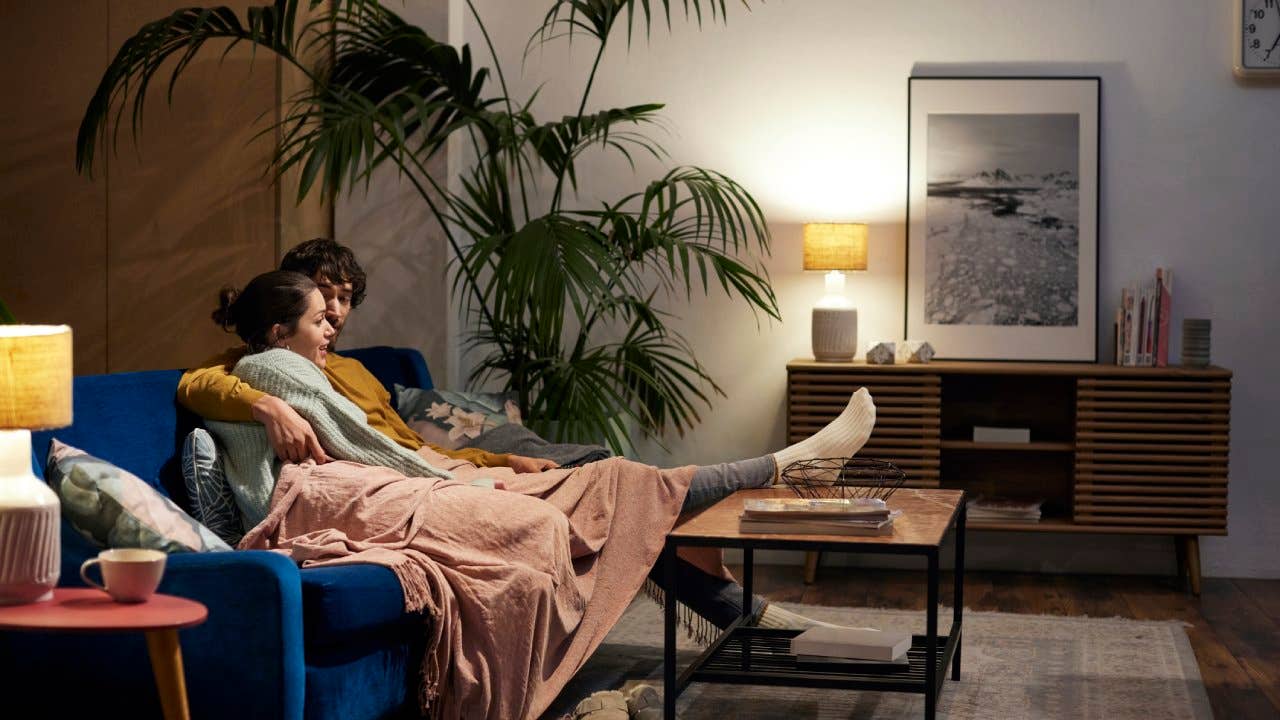How to make a home cozy

The Bankrate promise
At Bankrate we strive to help you make smarter financial decisions. While we adhere to strict , this post may contain references to products from our partners. Here's an explanation for .
Sometimes we want spaciousness…and sometimes we want a room to feel cozy. In particular, since the pandemic people have been craving coziness — the home as a haven from a virus-ridden world.
Here are ways to achieve that homey feeling. In some cases, it may be as simple as rearranging furniture and fixtures, while in other situations, it may call for an entirely new aesthetic. Depending on what you’re starting with and how comfy you want to go, there are many home decor ideas to consider for cozy living rooms, cozy bedrooms — and any other space in the house.
What makes a room cozy?
Home decor ideas and trends are always evolving, but recent years have seen particularly significant movements in interior design trends, as the American Society of Interior Designers’ 2022 Trends Outlook report points out. The social and psychological impact of COVID-19 has made their way into our houses, and people are more eager than ever for that safe, cozy feeling that we used to call home. For some, this may be about reducing clutter and undoing poor maintenance habits they picked up in quarantine, while for others, it may be the first time they endeavored to make their residences warm and welcoming (as opposed to just a place to crash at night). At the end of the day, though, there seem to be more people than ever who want their homes to offer comfort and contentment. And after the last few years of pandemic and turmoil, who can blame us?
Coziness can be a subjective thing: What makes one person feel comfortable may not be the same for another. Yet, some standard approaches work for most people. For instance, the brain seems to respond to different colors with different base reactions. Similarly, some styles of furniture, art and décor tend to lend more comfort than others. Gentle textures, low lighting, soft colors, and the right amount of open space can all help to make a room cozier without making it feel closed and cluttered.
Dim the lights
According to researchers surveyed by the publication FiveThirtyEight, culture can impact what lighting feels most comfortable to us. For example, we think of candles and fireplaces (reminiscent of romantic restaurants and homes) as exuding a “warm” glow and fluorescent lights (characteristic of commercial spaces and offices) as cold and harsh, though in fact, the yellow light of a candle is physically colder than a blue hue of a fluorescent bulb.
Whatever the science, one of the quickest ways to increase the cozy factor in a particular room is to tinker with the lighting. This could be as simple as reducing how many lights you have turned on, or it could be as complex as reimagining your lighting arrangement. Dimmer lights and softer hues often convey quiet, comfort and peace.
Blue lighting is often promoted as a soothing color that can help encourage a sense of ease and calm. However, many colors can achieve a similar result if they aren’t too bright or harsh — especially yellows. For example, many people find that soft yellow lights promote a sense of warmth and comfort, reminiscent of the relaxing flames our ancestors gathered around.
An easy way to play with lighting effects is installing some color-changing smart bulbs that you can control by voice or an app. No matter the color of your lighting, it’s generally a good tip to try lowering it if you want to create a cozy home. Dimmer switches can be installed for just about any fixture.
Add textured fabrics
Cozy goes hand-in-hand with comfortable, and comfortable things are those that feel and look soft, encouraging you to sink into them. So think fabric, especially textured fabric, which both interests the eye and invites the touch. This applies not just to furniture itself but also accessories. Throw blankets and pillows can go a long way towards making an area feel cozier and homier, breaking up the hard or angular lines of a chair, couch or table.
They don’t have to match the color scheme of that room, but it helps if they do. Choosing soothing hues and visible texturing for these materials draws attention, helping them stand out without making them feel chaotic or discomforting.
For instance, if you have chairs or couches in a room that you’re trying to cozy up, arrange some throw pillows on the seats, and lay some textured throw blankets over the back. Doing this can immediately make an area feel more lived-in and comfortable. Don’t forget fabric for the floors: A rug defines an area it’s laid upon, and can create a little nook in a big, open space. Adding wall tapestries or hangings can similarly shrink and soften a space — enveloping the walls effectively brings them in closer, increasing the cozy factor.
Use certain colors
Humans tend to respond to different colors with different moods. Some colors are more likely to encourage tension and nervousness, while others have the opposite effect. For example, some reds can cause agitation, while blues and greens (colors of sky, earth and ocean) often soothe.
This phenomenon is so pronounced that the American Psychological Association (APA) recommends that therapists employ such measures in their offices to increase client comfort. Specifically, it notes the benefits of lighter wall colors. According to the APA, hues like sage green and dusty blue can help to promote a sense of calm and relaxation.
That doesn’t mean your color scheme has to be limited to pastels. Darker colors on walls and ceilings tend to make rooms feel smaller and less expansive, and that can be useful to make a large, undivided space feel cozy and more cloistered. But be careful: this phenom can also impart an uncomfortable, closed-in vibe to an already-small or partitioned area.
Pick the right furniture
How you furnish your rooms goes a long way toward determining how cozy they will feel. The APA also points out that people tend to feel more comfortable and relaxed with grainy, natural textures and surfaces — in particular, wood (or wood-like substances) — as opposed to slick and shiny ones.
It may be tempting to load up with lots of big, wooden furniture, but resist. If the pieces are too large or numerous for the room, it can encourage a cluttered feeling, and clutter induces stress. Instead, you need a balance: finding furniture that leaves plenty of floor space while still providing comfortable seating, storage or surface space.
Good as grained woods are, there are other tactile materials and substances that can work, especially if they’re done soothing colors and natural-looking textures. Consider how a plain white couch looks in your room, and then imagine a sofa in soft, textured blue or green.
Place plants throughout
It never hurts to bring nature into a room. In particular, plants can help make a space feel alive; after all, they’re living, breathing things — and of course they come in those soothing natural colors and shapes. But if you lack a green thumb, you can get by with high-quality fakes that are often hard to distinguish from the real thing.
However, if you’re going to use plants to increase the cozy factor, be careful not to overdo it. Too much flora jumbled together can end up creating more chaos than comfort. A small potted plant in the middle of a table can positively impact the whole room; an entire table full of potted plants will have quite a different effect.
It’s essential to maintain perspective and proportion, with this as with all our recommendations. Use too much of a good thing, and cozy can turn claustrophobic quite fast.
Related Articles



